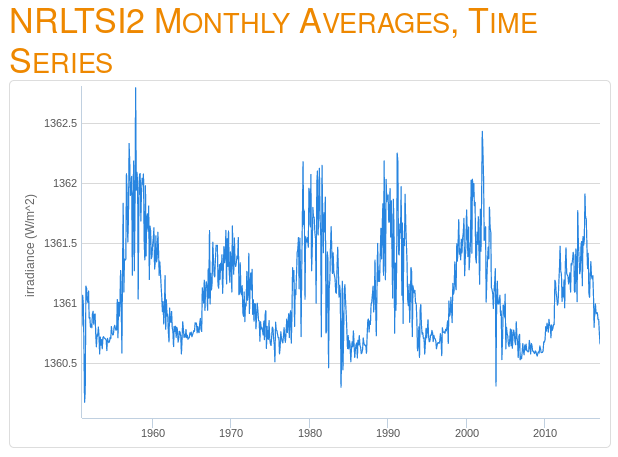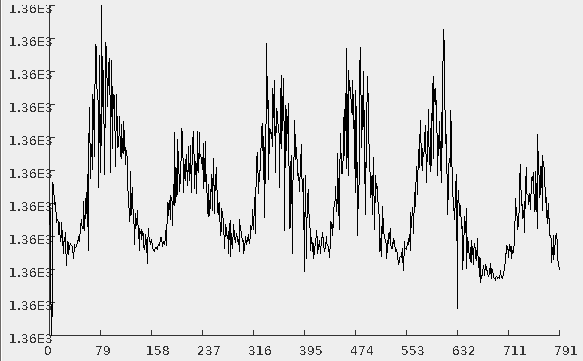|
Size: 3481
Comment:
|
← Revision 27 as of 2020-01-21 18:56:32 ⇥
Size: 3482
Comment:
|
| Deletions are marked like this. | Additions are marked like this. |
| Line 11: | Line 11: |
| . The first two effects occur only at shorter, more energetic wavelengths. Rayleigh scattering light pressure effects are proportional to inverse wavelength to the fourth power, accentuated by resonances; those are also unimportant for Rayleigh scattering at longer wavelengths. The table bin widths increase above 750 nanometer wavelengths, infrared and longer, so we can learn what we need to know about plume molecule behavior using only the 1 nm bins, even though the sun emits | . The first two effects occur only at shorter, more energetic wavelengths. Rayleigh scattering light pressure effects are proportional to inverse wavelength to the fourth power, accentuated by resonances; those are also unimportant for Rayleigh scattering at longer wavelengths. The table bin widths increase above 750 nanometer wavelengths, infrared and longer, so we can learn what we need to know about plume molecule behavior using only the 1 nm bins. Even though the sun emits |
Solar Reference Spectrum
I was unable to find a numeric "average", nanometer-binned vacuum solar spectrum for calculations. So, I downloaded the entire 80 MB database (tiny) from the SOLARISHEPPA website, 450 years of monthly average spectra ( in 1/5/10 nm bins running from 10 nanometers to 100 micrometers (3 THz). The plan is to use 720 monthly bins running from January 1951 to December 2016 (six recent solar cycles) and average them into a single spectrum (I hate averaging, but Oh Well) and use that as a reference spectrum. The spectrum will be used to estimate:
- Photoionization
- Photodisassociation
- Rayleigh scattering light pressure
... effects on megatonnes of rocket plume molecules emitted at GEO while raising the perigee of 100 megatonnes of space solar power satellite (25 TW at 4 kg/kW delivered).
- The first two effects occur only at shorter, more energetic wavelengths. Rayleigh scattering light pressure effects are proportional to inverse wavelength to the fourth power, accentuated by resonances; those are also unimportant for Rayleigh scattering at longer wavelengths. The table bin widths increase above 750 nanometer wavelengths, infrared and longer, so we can learn what we need to know about plume molecule behavior using only the 1 nm bins. Even though the sun emits
The source data is a 3890X times 4500Y data array embedded in an HDF5 data file with a suffix ".nc". I can look at the data with hdfview for CentOS 7 (available from pkgs.org), though not the earlier version for CentOS 6.
The source data array is mostly estimates for years 1850 to 2299 - a span of 450 years, 5400 monthly rows of data. The data bin centers are start at 10.5nm and are 1nm wide up to 749.5 nm, then 5nm wide from 752.5 to 4997.5 nm, then 10nm wide from 5005nm to 9995 nm, then 50 nm wide from 10025 to 999975 nm.
3900 Wavelength Bins |
5400 Lines of Monthly Data |
||||||
Width |
Columns |
nm Centers |
Line |
Month |
|||
1 nm |
0 |
739 |
10.5 |
749.5 |
0 |
January 1850 |
|
5 nm |
740 |
1589 |
752.5 |
4997.5 |
1212 |
January 1951 |
start |
10 nm |
1590 |
2089 |
5005 |
9995 |
2003 |
December 2016 |
end |
50 nm |
2090 |
3899 |
10025 |
99975 |
5399 |
December 2299 |
|
Focus on the energetic 1nm bins |
6 solar cycles, 792 months |
||||||
Comparison of Total Solar Irradiance (TSI) |
|
|
NTRLSI2 from LISIRD at LASP |
|
SOLARIS-HEPPA-3.2 from hdfview of 80 MB database |


